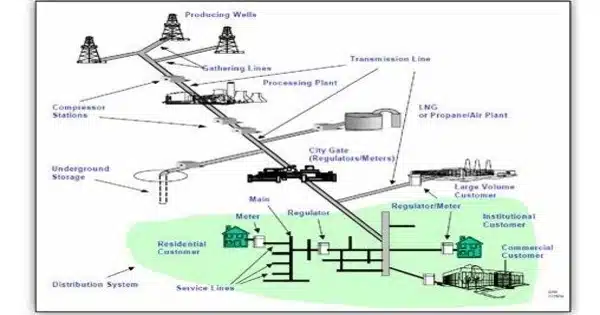As part of attempts to move to cleaner and more sustainable energy sources, the energy industry is interested in blending hydrogen into natural gas pipelines. Mathematical modeling can demonstrate how to combine hydrogen and natural gas safely for transit in existing pipeline networks. One of the proposed solutions for the transition to a net-zero-carbon economy is a secure and dependable transition to hydrogen.
“Injecting hydrogen into a natural gas pipeline alters how the gases flow, creating new conditions for operators,” said Anatoly Zlotnik, co-author of a recent report on the topic published in the journal PRX Energy. Los Alamos National Laboratory mathematician Zlotnik specializes in modeling, developing, and managing energy-transmission systems. “Our modeling shows that gradually injecting hydrogen into a natural gas pipeline network allows for safe, predictable operations.”
Injecting hydrogen into a natural gas pipeline alters how the gases flow, creating new conditions for operators. Our modeling shows that gradually injecting hydrogen into a natural gas pipeline network allows for safe, predictable operations.
Anatoly Zlotnik
Zlotnik and his Los Alamos colleagues created a model for conveying heterogeneous mixtures of natural gas and hydrogen through pipeline networks using nonlinear partial differential equations. According to the research, the infrastructure modeling includes compressor and regulator units, supply stations that inject gas into the network at defined pressures and hydrogen blends, and flow stations that remove the mixture from the network.
Math is critical to the safe and effective blending of hydrogen into natural gas pipelines. It is used for calculations involving composition, flow rates, pressure, safety, infrastructure design, control systems, and economic analysis in order to enable the successful integration of hydrogen as a cleaner energy source inside existing natural gas infrastructure.

Solving challenges to pipeline operation
Transporting hydrogen in existing natural gas pipeline networks enables operators to maximize the utility of these extensive and expensive facilities as part of a strategy to reduce carbon-emitting fossil fuels. Hydrogen is much lighter than natural gas, which is mostly methane, so blending them challenges pipeline operations in new ways.
The Los Alamos team concluded that restricting the rate of change of hydrogen injection into a natural gas pipeline will prevent big, rapid pressure shifts. The team’s approaches for modeling a pipeline network could help operators create injection rate norms.
As a clean fuel that emits no carbon dioxide, hydrogen has various advantages. In a fuel cell, hydrogen and oxygen combine to produce energy that can be used to power vehicles, trucks, and other devices. Hydrogen can also be mixed with natural gas and used in appliances like furnaces and dryers, or it can be burned to power manufacturing plants or create electricity.













